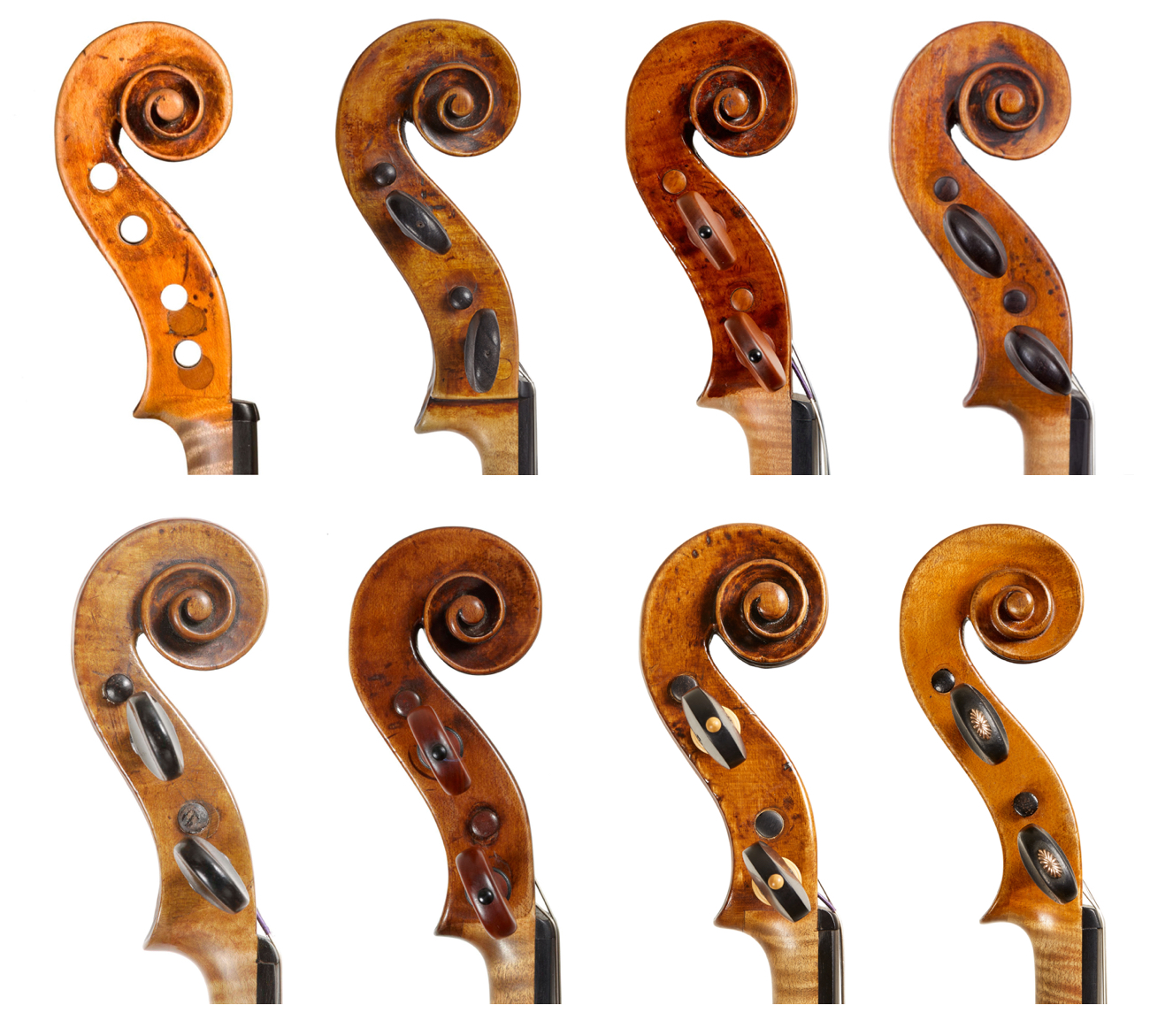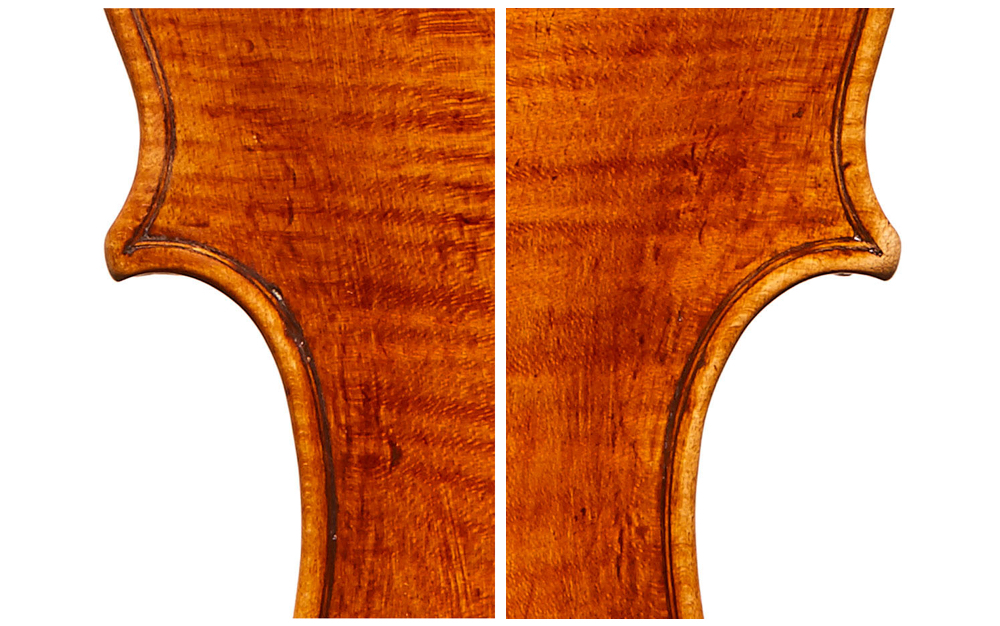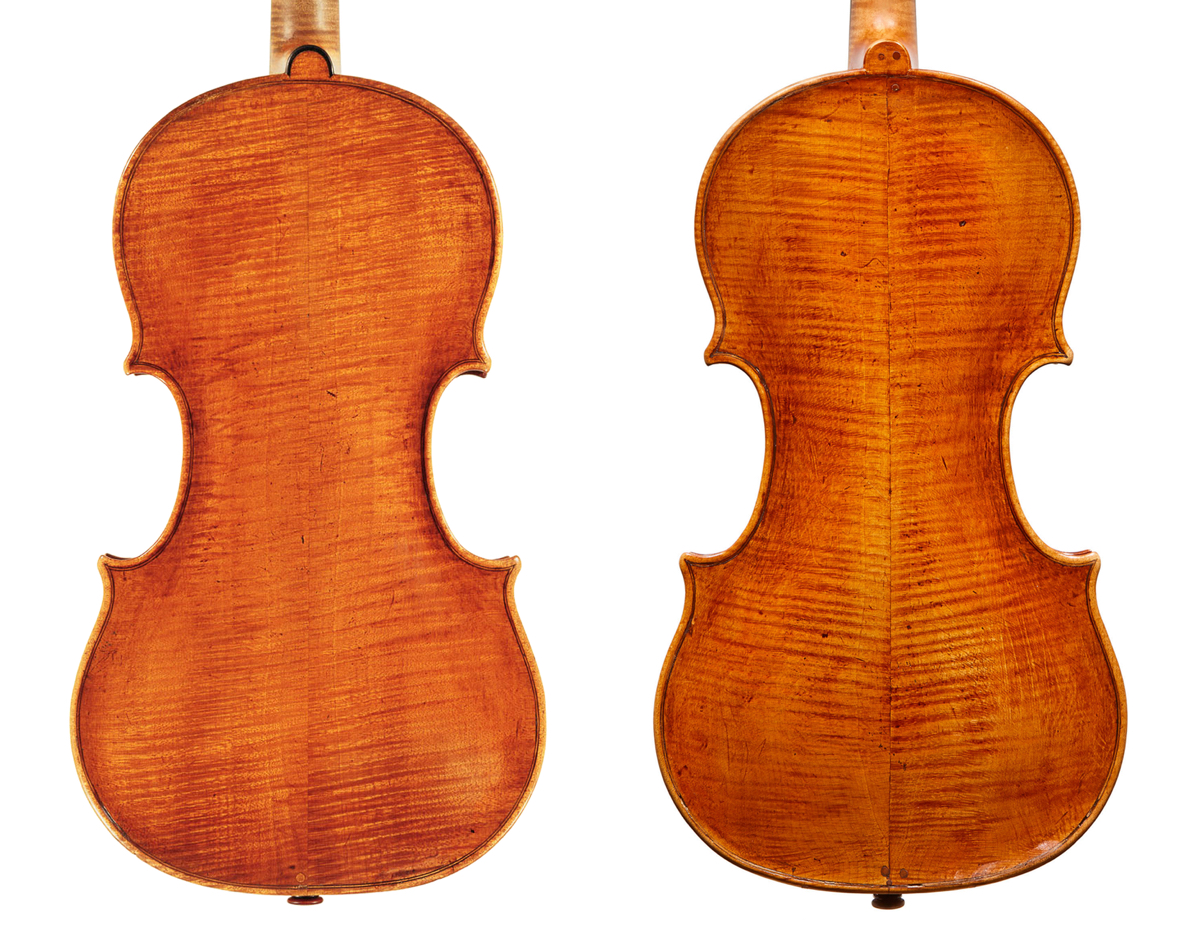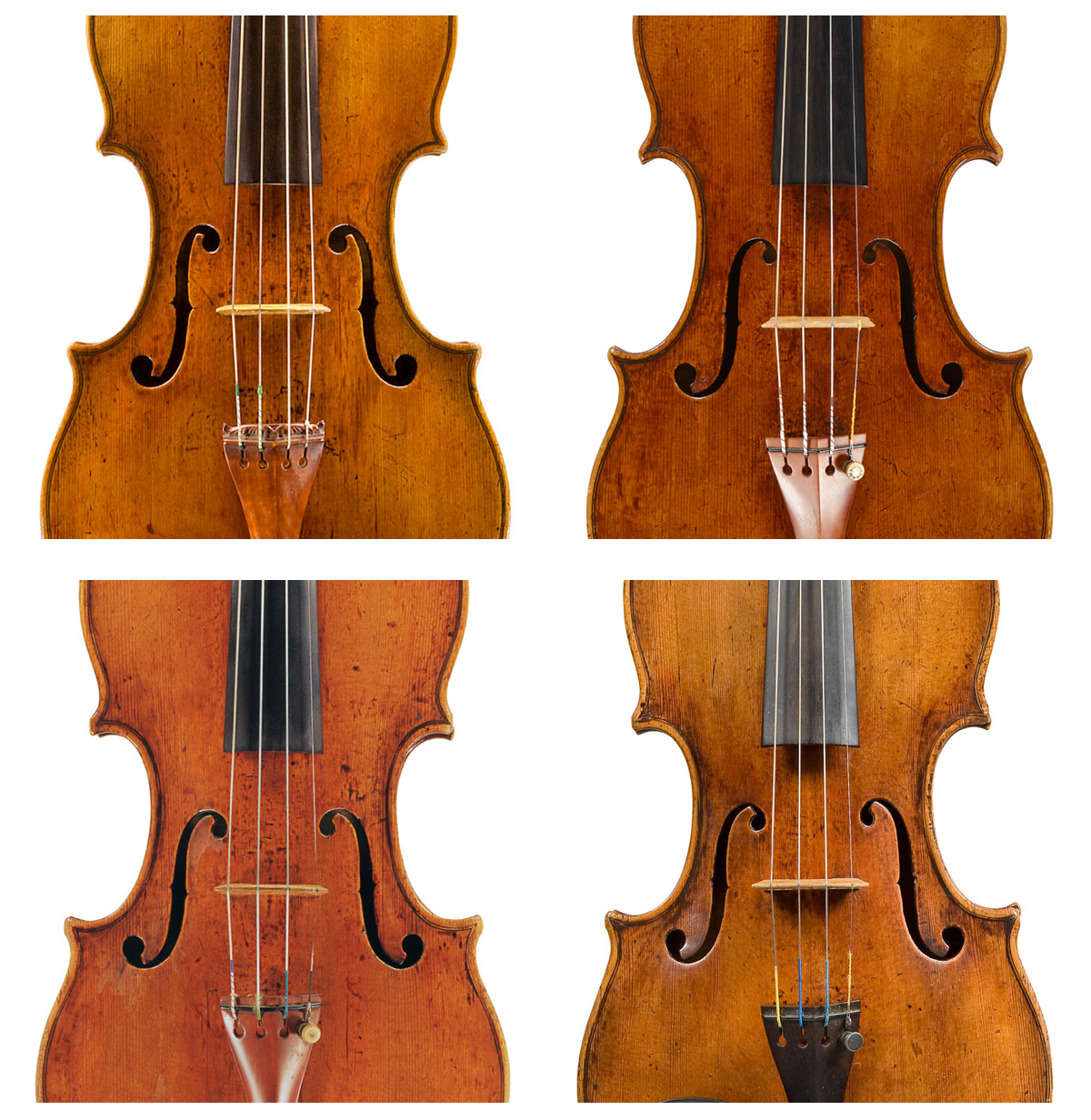Gioffredo Cappa’s output represents one of the high points in the long and illustrious history of Piedmontese violin making. This is not purely due to its bold conception, but also because his instruments have proved to be worthy concert tools for musicians.
While Cappa’s training as a violin maker is a matter of speculation, as we saw in part 1, his instruments do share some constructional details with his older Piedmont contemporaries Enrico Cattenar and Fabrizio Senta, as well as Giovanni Francesco Celoniato and Spirito Sorsana. This includes the use of beech for the linings and purfling, and, most notably, the setting of the ribs into a channel in the back. Given the rarity of extant Cappa instruments constructed in this manner, it seems that he abandoned this practice early on. However, the lack of original labels makes it difficult to ascribe a definite timeline to his work.

Top, left to right: Cappa heads from a 1690 violin, 1696 cello and two c. 1710 violins. Below, left to right: contemporary Piedmont violin heads by Senta 1670, Cattenar 1710, Sorsana 1725 and Celoniato 1734
Another characteristic common to these early Piedmont makers are the slender pegboxes. On examples by Cappa the curve of the pegbox tends to swell towards the bottom. Also specific to Cappa’s work, the pegbox chamfer is more open and visible at the throat and the eye of the scroll is flat.
As with many 17th-century Italian makers, Cappa instruments display an affinity for the Amati family. This is especially apparent from the outlines, which have a rounded, Amati-like shape, although Cappa’s outlines tend to be even more rounded; also, lacking the discipline of an Amati, they have a rather freehand appearance. The arching is similarly Amati influenced, with a rounded curve of moderate to full height and a slight channeling around the edge.

Cappa’s rough finish, with visible tool marks and unevenly stained purfling, is evident on this c. 1710 violin. Photos: Tarisio
Unlike the Amati family, Cappa doesn’t seem to have been too concerned with a clean, refined finish. In addition to the numerous tool marks visible on the body and scroll, his purfling is rather rough. This is especially apparent in the corners, where the purfling mitres overlap indiscriminately. Cappa was also not so fastidious with the staining of the black strips of the purfling, leaving large gaps in the middle of some of the strips. On the thicker strips the uneven result gives the appearance of a railroad track with a lighter colored center surrounded by a more fully stained black on either side.
Cappa’s varnish tends to be various shades of golden and orange-brown, with occasional examples displaying reddish tones. Round pins are usually prominently placed on the top and bottom of the back, well inside the edge and off-center.

These Cappa violin backs from c. 1690 and c. 1710 are typical of his wood selection
Although Cappa’s wood selection is not of the lavish quality seen on some Cremonese instruments of the period, it is nonetheless quite attractive. The tops are made from mostly narrow, straight-grained spruce while the backs are of a narrow-grained maple. A distinctive feature of this maple that is visible on some of Cappa’s instruments are the pronounced vertical grain lines running the full length of the body.

Top: violins by Andrea Amati,1570 (left) and Nicolò Amati, 1648; below: two Cappa violins dated 1690
Broadly placed on the body and leaning slightly inwards, the f-holes of Cappa instruments have a soft, rounded design. Unlike Nicolò Amati f-holes, which are carved with straight stems into the nicks, Cappa’s f-holes tend to curve slightly as they approach the nicks, forming a soft v-shape. In this respect they are closer in conception to the work of Nicolò’s grandfather Andrea Amati.
While Cappa’s extant output consists mostly of violins, he also produced cellos (there appear to be no known Cappa violas). Built on a somewhat broad model, the cellos share many of the same characteristics with the violins and, like the violins, have proven to be excellent concert instruments. Although there is one example of a Cappa cello that was cut down and subsequently enlarged by the Hills, they have mostly escaped this fate. Unlike many 17th-century cellos, Cappa cellos are not oversized by modern standards, with back lengths up to about 75 cm. In this respect they are in line with a few other late-17th-century makers who adopted a smaller cello model, such as Francesco Rugeri and Andrea Guarneri.
Overall Cappa’s output effectively merges the 17th-century Piedmontese style and its northern European influences with the Amati tradition. It does this more in spirit than production, as Cappa did not use the Amati construction system. Also, while he captures some of the quality of an Amati, there is a more rustic approach to Cappa’s work. At its best, however, his output is a bold expression of the Amati ideal. This is particularly true of the large-modeled violins that were probably inspired by the ‘grand pattern’ Amati form. In this regard, Cappa instruments are some of the most successful examples of early Piedmontese work.
Julian Hersh is a cellist, expert and co-founder of Darnton & Hersh Fine Violins in Chicago.
